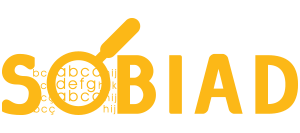Evaluation of Thyroid Functions and Correlation of Body Mass Index with Apnea-Hypopnea Index in Patients with Obstructive Sleep Apnea Syndrome
Thyroid Functions and Apnea-Hypopnea Index
DOI:
https://doi.org/10.5281/zenodo.8135153Keywords:
OSAS, thyroid, BMI, hypothyroidismAbstract
Background: Thyroid hormone deficiency and excessive weight, which are considered endocrine disorders, can be easily detected, have low cost, and guide treatment planning in obstructive sleep apnea syndrome (OSAS). We examined thyroid hormone levels in patients diagnosed with OSAS using polysomnography and conducted a study to investigate the correlation between body mass index (BMI) values and apnea-hypopnea index (AHI).
Material and Methods: This study included patients who presented to the Ear, Nose, and Throat Clinic and Sleep Disorders Center of Dicle University Faculty of Medicine Hospital between July 2008 and November 2010, and were diagnosed with OSAS based on polysomnography (PSG) results. The study group consisted of a heterogeneous group in terms of presenting complaints, with most patients reporting complaints of snoring, while others had a history of witnessed apneas by their partners, excessive daytime sleepiness, fatigue, and headaches. From the group diagnosed with OSAS (AHI>5) based on PSG results, the first 100 randomly selected patients were included in the study.
Results: The mean age of the cases diagnosed with OSAS based on PSG results was 48.79±10.70. The age of women ranged from 24 to 76, with a mean age of 55.44±19.25. The age of men ranged from 24 to 77, with a mean age of 46.33±15.48. Among the 100 patients, 33 had mild, 19 had moderate, and 48 had severe OSAS. Among these 100 cases, hypothyroidism was detected in 5 patients (2 with mild OSAS and 3 with severe OSAS) based on serum thyroid hormone levels. Among the patients with hypothyroidism, 2 were female and 3 were male. In all cases, a positive correlation was found between BMI and AHI, with a significance level of 45.9% and a statistically significant correlation.
Conclusion: Based on these findings, it can be concluded that screening for hypothyroidism and measuring BMI should be necessary for all patients presenting to sleep laboratories with suspected OSAS.
References
Kupfer DJ. Application of EEG sleep for the differential diagnosis and treatment of affective disorders. Pharmakopsychiatr Neuropsychopharmakol. 1978;11(1):17-26. doi:10.1055/s-0028-1094559
Gastaut H, Tassinari CA, Duron B. Polygraphic study of the episodic diurnal and nocturnal (hypnic and respiratory) manifestations of the Pickwick syndrome. Brain Res. 1966;1(2):167-186. doi:10.1016/0006-8993(66)90117-x
Franklin KA, Lindberg E. Obstructive sleep apnea is a common disorder in the population-a review on the epidemiology of sleep apnea. J Thorac Dis. 2015;7(8):1311-1322. doi:10.3978/j.issn.2072-1439.2015.06.11
Reutrakul S, Mokhlesi B. Obstructive Sleep Apnea and Diabetes: A State of the Art Review. Chest. 2017;152(5):1070-1086. doi:10.1016/j.chest.2017.05.009
Abdul Razak MR, Chirakalwasan N. Obstructive sleep apnea and asthma. Asian Pac J Allergy Immunol. 2016;34(4):265-271. doi:10.12932/AP0828
Santilli M, Manciocchi E, D'Addazio G, et al. Prevalence of Obstructive Sleep Apnea Syndrome: A Single-Center Retrospective Study. Int J Environ Res Public Health. 2021;18(19):10277. Published 2021 Sep 29. doi:10.3390/ijerph181910277
Masa JF, Corral J, Sanchez de Cos J, et al. Effectiveness of three sleep apnea management alternatives. Sleep. 2013;36(12):1799-1807. Published 2013 Dec 1. doi:10.5665/sleep.3204
Bruyneel M, Veltri F, Poppe K. Prevalence of newly established thyroid disorders in patients with moderate-to-severe obstructive sleep apnea syndrome. Sleep Breath. 2019;23(2):567-573. doi:10.1007/s11325-018-1746-z
Romero-Corral A, Caples SM, Lopez-Jimenez F, Somers VK. Interactions between obesity and obstructive sleep apnea: implications for treatment. Chest. 2010;137(3):711-719. doi:10.1378/chest.09-0360
Mete T, Yalcin Y, Berker D, et al. Relationship between obstructive sleep apnea syndrome and thyroid diseases. Endocrine. 2013;44(3):723-728. doi:10.1007/s12020-013-9927-9
Lanfranco F. Sleep apnea syndrome and hypothyroidism. Endocrine. 2013;44(3):551-552. doi:10.1007/s12020-013-0018-8
Mickelson SA, Lian T, Rosenthal L. Thyroid testing and thyroid hormone replacement in patients with sleep disordered breathing. Ear Nose Throat J. 1999;78(10):768-775.
Winkelman JW, Goldman H, Piscatelli N, Lukas SE, Dorsey CM, Cunningham S. Are thyroid function tests necessary in patients with suspected sleep apnea?. Sleep. 1996;19(10):790-793. doi:10.1093/sleep/19.10.790
Skjodt NM, Atkar R, Easton PA. Screening for hypothyroidism in sleep apnea. Am J Respir Crit Care Med. 1999;160(2):732-735. doi:10.1164/ajrccm.160.2.9802051
Popovici I, Khawaja I. Efficacy of thyroid function tests in patients suspected of having obstructive sleep apnea. Chest. 1997;112(3):149S.
Misiolek M, Marek B, Namyslowski G, et al. Sleep apnea syndrome and snoring in patients with hypothyroidism with relation to overweight. J Physiol Pharmacol. 2007;58 Suppl 1:77-85.
Orr WC, Males JL, Imes NK. Myxedema and obstructive sleep apnea. Am J Med. 1981;70(5):1061-1066. doi:10.1016/0002-9343(81)90867-6
Güven FS, Çiftçi B, Aydoğdu M. Obstrüktif Uyku Apne Sendromu Ģüphesi Olan Olgularda
Hipotiroidi Taraması Yapılmalımı? In: Çöplü L, Selçuk T, eds. Türk Toraks Derneği VIII. Yıllık Kongre; 27 Nisan-1 Mayıs 2005; Antalya, Türkiye;2005:6 (Ek 1):176.
Köktürk O. Obstrüktif uyku apne sendromu. Özyardımcı N (Editör). 25. Yıl Akciğer Günleri kongre kitabı. Bursa: Uludağ Üniversitesi Basım Evi, 2000 ; 197-213
Köktürk O, Köktürk N. Obstrüktif uyku apne sendromu fizyopotolojisi. Tüberküloz ve Toraks 1998; 46: 288-300.
Lam JC, Sharma SK, Lam B. Obstructive sleep apnoea: definitions, epidemiology & natural history. Indian J Med Res. 2010;131:165-170.
Erdogdu S. Our Sleep Laboratory Results: Etiological Investigation of Snoring. Haydarpasa Numune Med J 2022;62(3):301–306. DOI: 10.14744/hnhj.2021.58234
Ancoli-Israel S, Kripke DF, Klauber MR, Mason WJ, Fell R, Kaplan O. Sleep-disordered breathing in community-dwelling elderly. Sleep. 1991;14(6):486-495. doi:10.1093/sleep/14.6.486
Young T, Shahar E, Nieto FJ, et al. Predictors of sleep-disordered breathing in community-dwelling adults: the Sleep Heart Health Study. Arch Intern Med. 2002;162(8):893-900. doi:10.1001/archinte.162.8.893
Bixler EO, Vgontzas AN, Ten Have T, Tyson K, Kales A. Effects of age on sleep apnea in men: I. Prevalence and severity. Am J Respir Crit Care Med. 1998;157(1):144-148. doi:10.1164/ajrccm.157.1.9706079
Lin CM, Davidson TM, Ancoli-Israel S. Gender differences in obstructive sleep apnea and treatment implications. Sleep Med Rev. 2008;12(6):481-496. doi:10.1016/j.smrv.2007.11.003
Topîrceanu A, Udrescu L, Udrescu M, Mihaicuta S. Gender Phenotyping of Patients with Obstructive Sleep Apnea Syndrome Using a Network Science Approach. J Clin Med. 2020;9(12):4025. Published 2020 Dec 12. doi:10.3390/jcm9124025
Martins FO, Conde SV. Gender Differences in the Context of Obstructive Sleep Apnea and Metabolic Diseases. Front Physiol. 2021;12:792633. Published 2021 Dec 14. doi:10.3389/fphys.2021.792633
Wimms A, Woehrle H, Ketheeswaran S, Ramanan D, Armitstead J. Obstructive Sleep Apnea in Women: Specific Issues and Interventions. Biomed Res Int. 2016;2016:1764837. doi:10.1155/2016/1764837
Nieto FJ, Young TB, Lind BK, et al. Association of sleep-disordered breathing, sleep apnea, and hypertension in a large community-based study. Sleep Heart Health Study [published correction appears in JAMA 2002 Oct 23-30;288(16):1985]. JAMA. 2000;283(14):1829-1836. doi:10.1001/jama.283.14.1829
Jehan S, Zizi F, Pandi-Perumal SR, et al. Obstructive Sleep Apnea and Obesity: Implications for Public Health. Sleep Med Disord. 2017;1(4):00019.
Kuvat N, Tanriverdi H, Armutcu F. The relationship between obstructive sleep apnea syndrome and obesity: A new perspective on the pathogenesis in terms of organ crosstalk. Clin Respir J. 2020;14(7):595-604. doi:10.1111/crj.13175
Güven SF, Çiftçi TU, Çiftçi B, fiipit T. Obstrüktif Uyku Apne Sendromunda Risk Faktörleri.
Toraks Derneği 5. Yıllık Kongresi Özet Kitabı 2002; PS-614.
Gray EL, McKenzie DK, Eckert DJ. Obstructive Sleep Apnea without Obesity Is Common and Difficult to Treat: Evidence for a Distinct Pathophysiological Phenotype. J Clin Sleep Med. 2017;13(1):81-88. Published 2017 Jan 15. doi:10.5664/jcsm.6394
Ibrahim AS, Almohammed AA, Allangawi MH, et al. Predictors of obstructive sleep apnea in snorers [published correction appears in Ann Saudi Med. 2008 Jan-Feb;28(1):64]. Ann Saudi Med. 2007;27(6):421-426. doi:10.5144/0256-4947.2007.421
Downloads
Published
How to Cite
Issue
Section
Categories
License
Copyright (c) 2023 Berzan Haznedar, İsmail Topçu

This work is licensed under a Creative Commons Attribution 4.0 International License.
All articles published in this journal are licensed under the terms of the Creative Commons Attribution 4.0 International License (CC BY 4.0).










